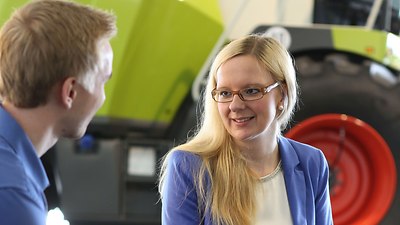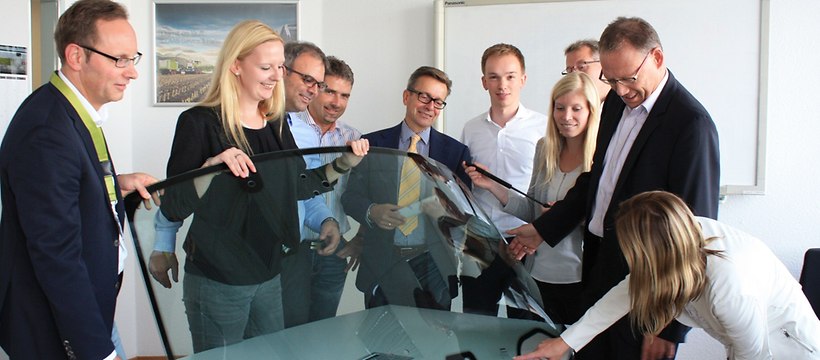
Transparency in the supply network
If its says CLAAS on the box, then CLAAS must be in the box – simple yet demanding, this quality standard is a given in the company since decades. Nevertheless, the suppliers of parts, components and numerous assemblies for our harvesting machinery and tractors are becoming increasingly important. These suppliers are located all over the world in our modern economy.
CLAAS Purchasing introduced a smart approach in April 2016 to explore this network of suppliers. The aim is to safeguard quality standards and to optimise purchasing parameters. ‘Supply Net Mapping’ is the project name. What it means is preparing a map of supplier relationships.
One of the questions is: “Who makes the back window in the K07 cabin installed on the AXION 900?” Or: “Are the compressors purchased from a German engine supplier really made in Germany?” Purchasers at CLAAS raise these and similar questions in an age of increasing globalisation, aggravated supply risks and stricter legal requirements concerning the origins of products.
The group-wide ‘Supply Net Mapping’ project – launched by CLAAS Purchasing – systematically tackles these issues by recording the upstream sub-supplier relationships across several tiers on a map of the world.
The aim of the project is to bring greater transparency. “Not only is CLAAS keen to find out which companies operate as suppliers within its supply chain, but also what this structure looks like among competitors and suppliers of complementary products”, says project manager Antonia Kappel. “The project sets out to identify the manufacturers of sourced parts that are delivered indirectly to production companies by other component suppliers.”
It will also be important to discover the countries in which production of these components actually takes place, as CLAAS frequently buys its parts from European subsidiaries that are not responsible for their manufacture. The purchasers can use the insight they acquire to reduce the spread of margins, to improve supply risk management or in other ways – levers which will help to sustainably improve the economic efficiency and quality of CLAAS products.
Serial and spare parts purchasers from a number of CLAAS sites are working on the project together with Corporate Purchasing, for instance Global Sourcing. The project sponsors Rüdiger Mohr, VP Corporate Purchasing, and Ulrich Timcke, Managing Director at CLAAS Service and Parts (CSP) make sure that project implementation keeps moving forward.
The project is scheduled to run for three years. Its project manager is Antonia Kappel from the CSP purchasing team. She is currently in a PhD program run by the Münster University of Applied Sciences in cooperation with the University of Twente under the working title “Supply Net Mapping”. Her Master Thesis, which has been a first approach to this subject, has been awarded with the Bernhard Rincklake and the BVL Thesis Award.

Meeting for the purchasing project ‘Supply Net Mapping’. The purchasers identify the manufacturer of a cabin back window.

